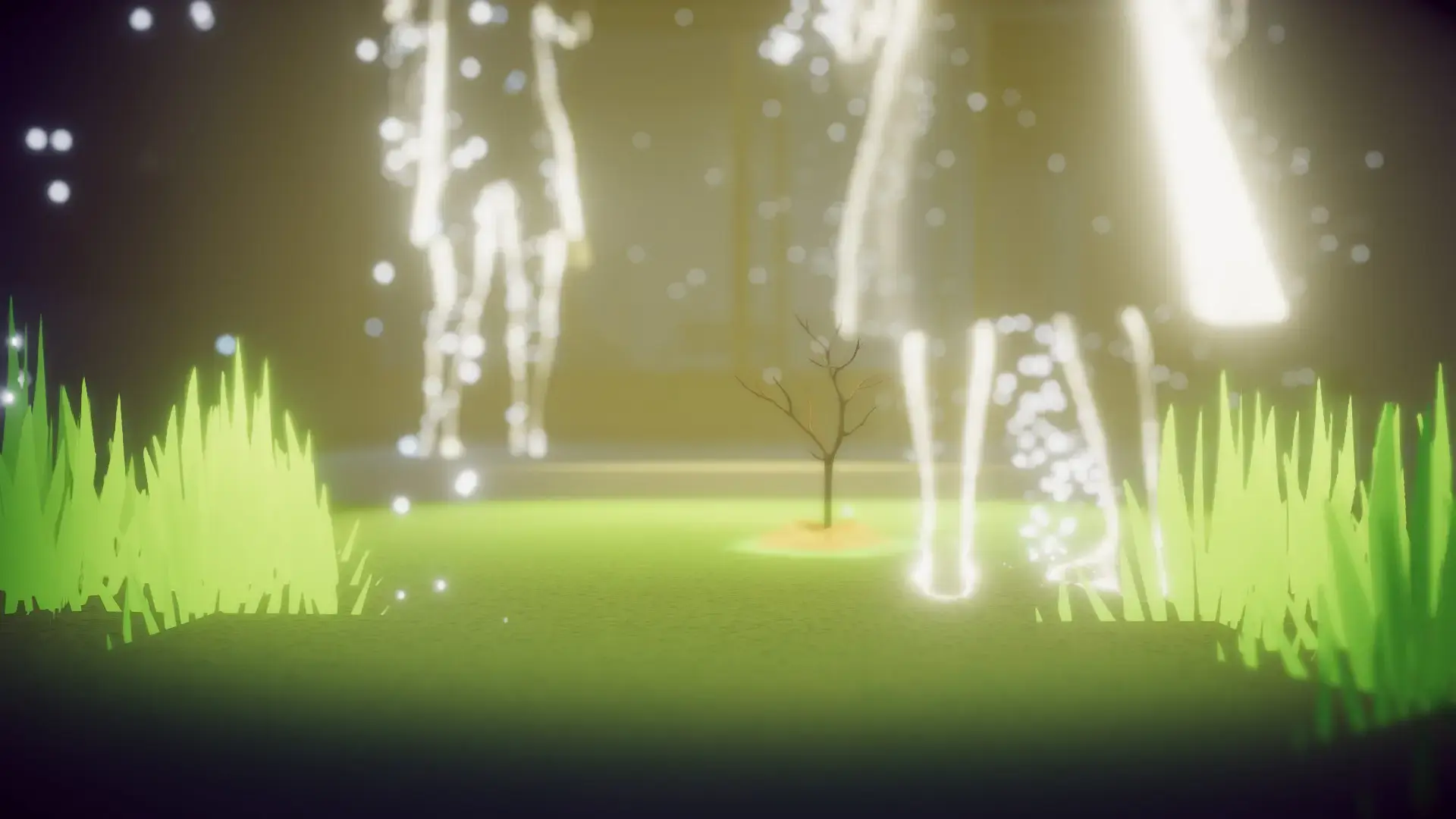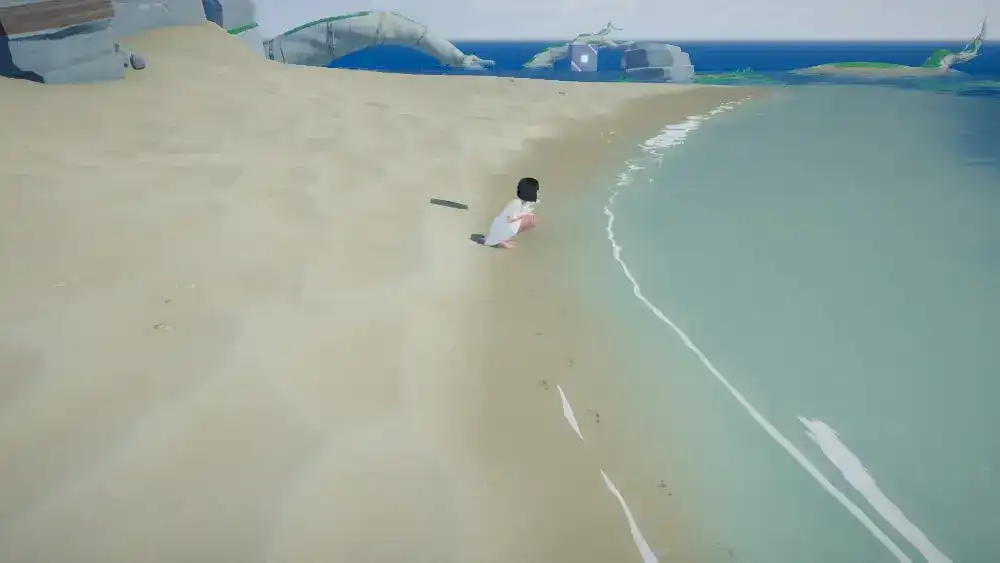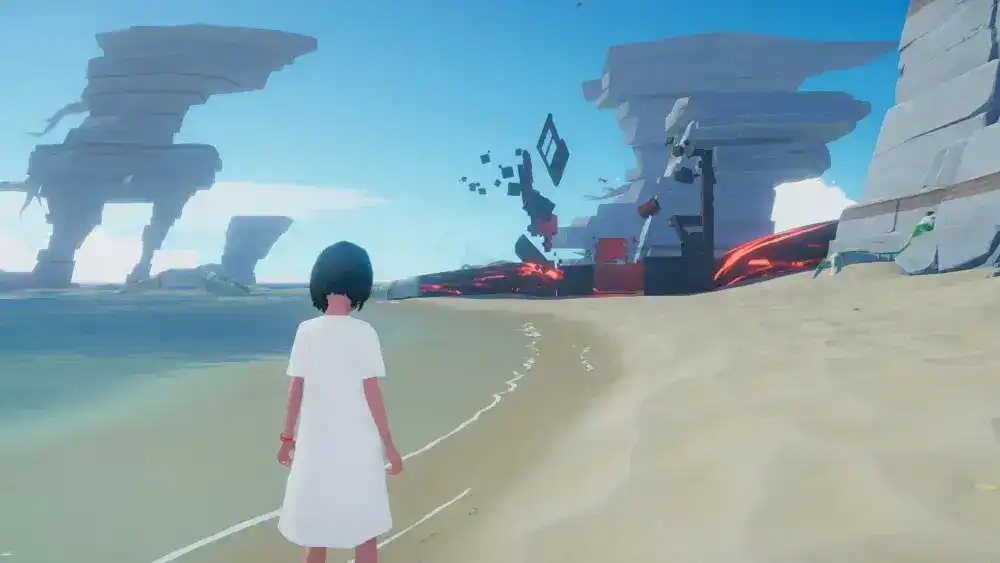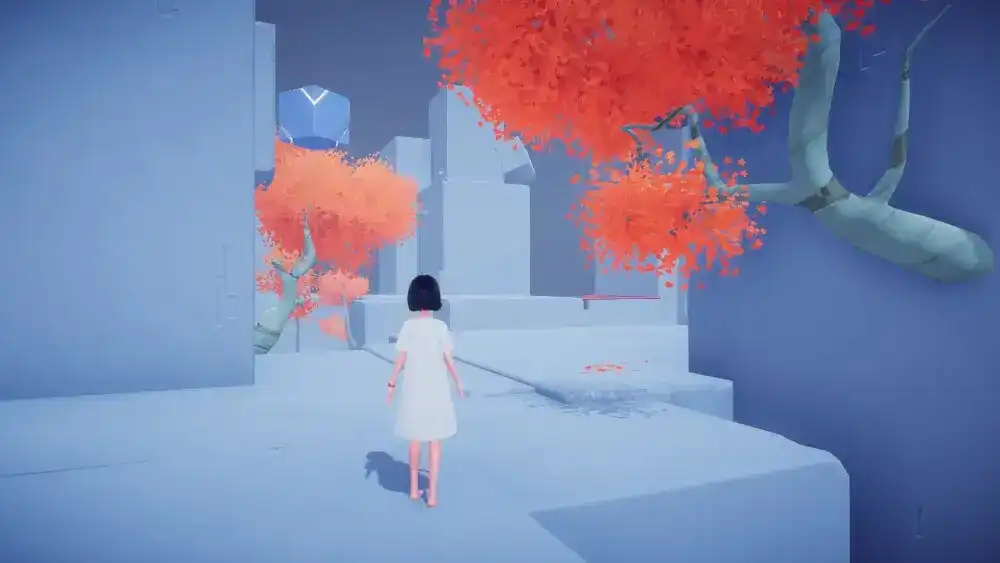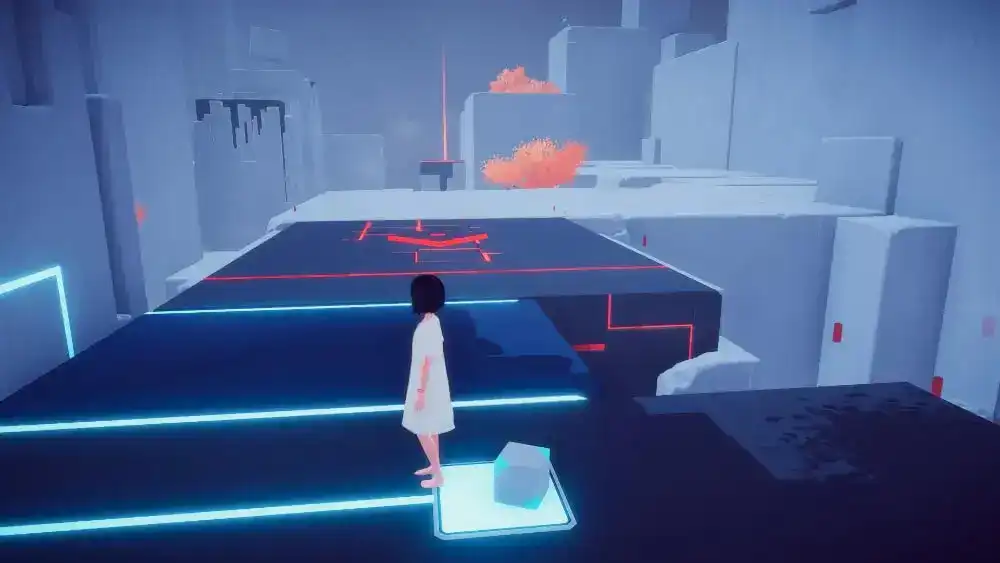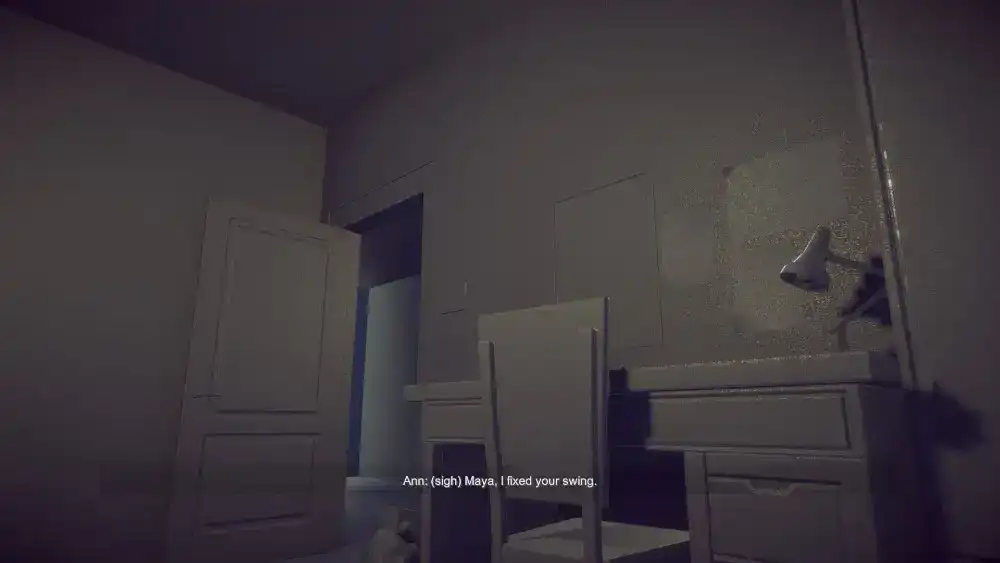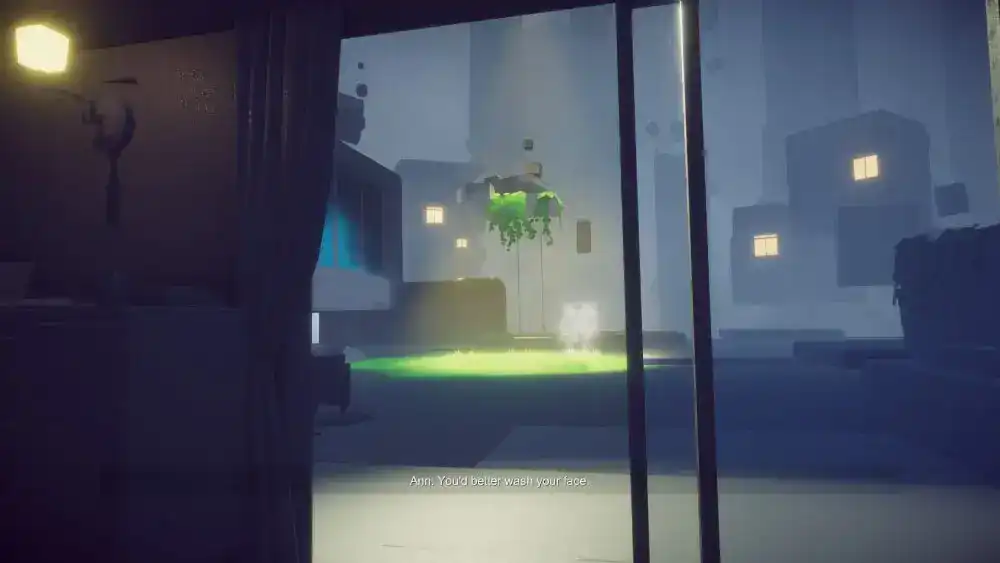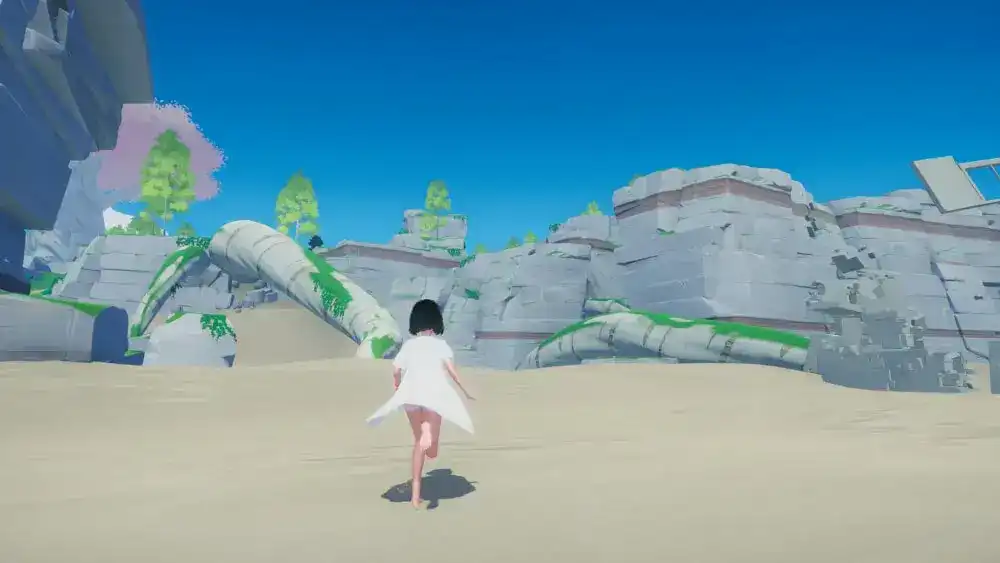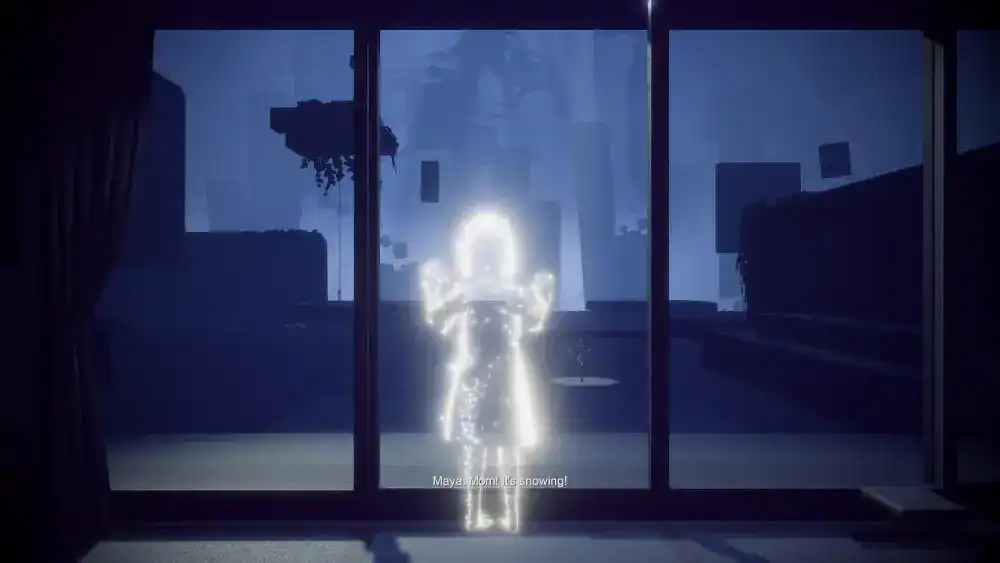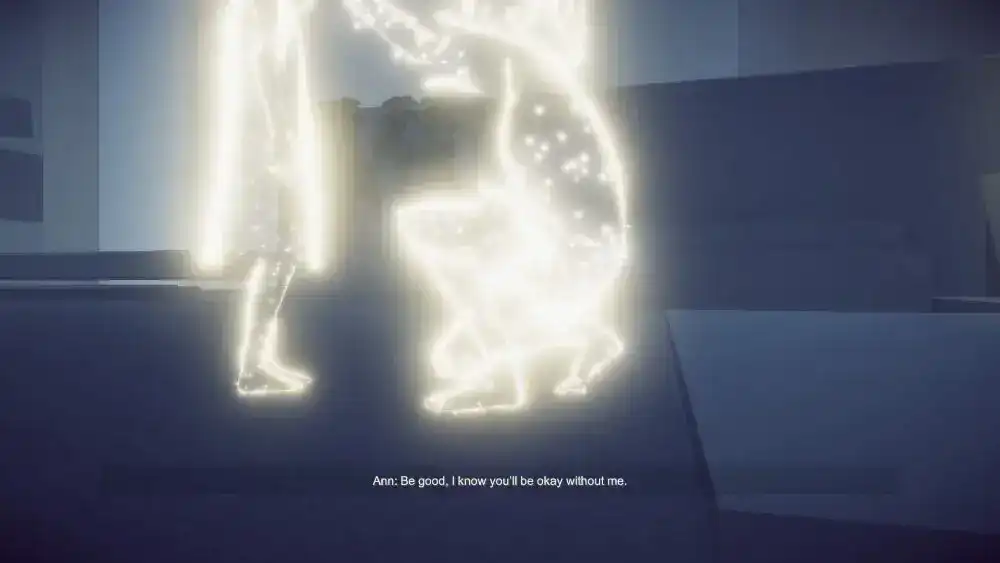I was looking through a list of demos on Steam when I came across Ever Forward by Pathea Games. It had a minimal visual style that I just love seeing, with the added bonus of being a puzzle game. Seeing as the game releases on August 13, I thought it would be a good time to play the demo.
Ever Forward tells a thought-provoking story with multiple interpretations (going as far as the demo would take me, anyway). I think the game hits a sweet spot between minimalistic design and worldbuilding that is hard to come by. It’s a quiet, lonely game — but not empty.
A Dream-Like Beginning
The demo starts with a relaxing beach setting. A girl in a plain white dress appears in the distance as the camera zooms to her eyes and shifts to her perspective. She's eyeing the beach and the distant trees.
Then, the screen buzzes, and visual glitches start to appear in her eyes as data fills the screen. On my next blink, a strange, black and red ooze in the shape of a tree root pops up in front of me. It is pulsing red and with a single dainty bonsai tree inside of it. It was at this point that I knew Ever Forward would be telling its story with subtlety, and I would only be given small pieces of a bigger picture. But the start of the game filled me with so much curiosity that I just had to ask — what would learning the whole story cost me?
The game answered in kind. I was teleported as soon as I approached the “corrupted” area of the beach — sent into an alien, unfamiliar and cold world. It lacked color or any natural objects, save for a few trees growing out of the stone-like structures. I wondered about its connection to the computerized screen that had flashed beforehand. The objective that lay ahead (and for many more rooms to come) was simple: solve the puzzle, move forward.
The game introduces its main challenge: avoiding robotic sentinels called Roundy-Bots and solving button puzzles with increasing difficulty. However, the developers don’t just leave you at the mercy of the mysterious machines. Each mechanic is slowly introduced over time, giving players time to feel comfortable with the controls. For example, one puzzle may teach the player how to distract one of the Roundy-Bots with sound by throwing a box, while the next puzzle tests the player’s ability to do so under time pressure. The final puzzle of that set might challenge the player to distract a Roundy-Bot while dealing with a gate puzzle.
As a puzzle game, the developers crafted a sense of natural difficulty progression with a sensible level design meant to reward players for clever thinking. Although it sounds like a simple concept not at all unfamiliar to those who play puzzle games, Ever Forward still provided a few head-scratchers. There isn’t just one way to solve each puzzle, and I had a few “aha!” moments as I started applying the newly learned game mechanics to the puzzles that lay ahead.
As fun as the beginner puzzles were, what really kept me going through them was having the chance to learn more about the main character, the world, and the relationship between them. After a handful of puzzles, I was finally given more of the story.
Crafting A Bleak Future
Ever Forward’s plot is crafted through memories supplied by a girl named Maya. She has a busy mother named Ann who works at the National Science Lab and seems to be working on some sort of critical technology.
During the first cutscene after the first round of puzzles, the player wakes up in a bedroom, staring at glow-in-the-dark stars on the ceiling. Maya, the girl who I’ve been playing as from the start, is called outside by her mother, Ann. She says that she fixed Maya’s swing for her, and Maya rushes outside to see it. However, they are interrupted by a call from the National Science Lab meant for Ann, who presumably has been called into work. She tells Maya, “I know you’ll be fine without me,” a message that would be later repeated in multiple cutscenes.
Although brief, the cutscene acted as a major catalyst in my journey through the demo. I felt that Ever Forward had something important to say, and that it would relay this information in the form of Maya’s memories of Ann and herself. On my first time seeing this cutscene, I knew that Ann’s work for the National Science Lab would be critical to the plot — does Ann’s work have any relation to the strange interface that flashed in Maya’s eyes? Does it have some relation to the synthetic, robotic world I was transported to?
I felt that the game was speaking on the relationship of technology and nature, especially in its setting. Both worlds have encroached on each other — the world of technology appearing through black and red structures in the natural world of the beach, while the world within the puzzle areas is broken up with trees taking root in the structures.
After another round of puzzles, of which I started to breeze through easily, the next cutscene shows that the tree on the beach is an important part of Maya’s memories: Ann and Maya stand in front of the tree having just planted it outside, and Ann is once again whisked away by the National Science Lab. This tree’s symbolism is ever-present: it's the first object to be surrounded by the “corrupted” area on the beach, and looming far in the background of each puzzle world is an ominous, black-and-red tree of similar shape.
The game finally sets the player free, back on the beach, having conquered one “world” of puzzles. I spent a lot of time just gazing out at the horizon or up toward the hills beyond. I eventually wandered away from the water, and further into land, I saw more black and red areas, each encapsulating a household object with some relevance to Maya. Each time I went to touch one of these objects, I had to complete a set of puzzles in order to return to the main area.
The Blurring Line Between Reality and Imagination
As I completed more puzzles (which were increasingly difficult to complete), I also unlocked memories of importance to Maya, and over time, the story started to take a darker turn. Ann and Maya turn on the TV to hear an important announcement: any and all outdoor activities would be forbidden, with no exception. The announcer tries to sound calm, noting that supplies would be sent to each household, while Maya and Ann look outside of the window of their home. Ann takes a phone call, and it seems as though National Science Lab is an exception to the rule.
Somehow, I couldn’t shake the feeling that the National Science Lab had some hand in either causing or solving the unnamed crisis happening just outside. The connection between the game’s plot and the current epidemic definitely caused mixed feelings. I thought it was funny that I was experiencing what might have been considered a dystopian future just a year ago. It was scary that reality had started to approach science fiction.
Eventually, Ann becomes busier working on an unexplained prototype, leaving Maya to her own devices. One day, Ann walks in on Maya practicing a speech: about how she invented the Roundy-Bot to try and help her mom. In the final cutscene of the demo, we learn that the Roundy-Bot is supposed to protect Maya so she can go outside and help Ann at the National Science Lab — which compels Ann to scold at Maya, calling it “just a toy.”
The demo ends there, with a rift growing between Ann and Maya as work and the emergency happening outdoors have taken their toll on each other. I felt that their relationship as mother and daughter was genuine, heartfelt, and of deep importance to the game.
The Bottom Line
I was left in awe at the game's open-endedness. I really enjoyed not knowing what everything meant — I had no idea whether Maya had somehow died in the epidemic or if the grassy hills I had explored were a metaphor for Maya's exploration of her own memories in her subconscious. I prefer the latter, as the dreamlike state of the world suggests that not all is what it seems. Whatever my interpretation may be, I closed the demo with an extremely positive opinion about the experience. I recommend trying out the demo parse out the plot for yourself.
Oh, and good luck on the demo's last puzzle. It took me an hour and a Youtube video to get through.
